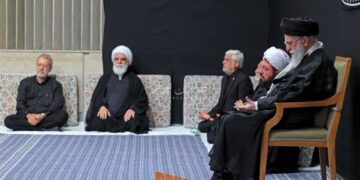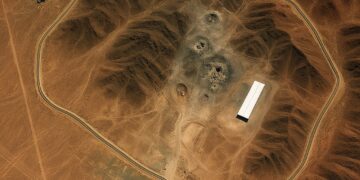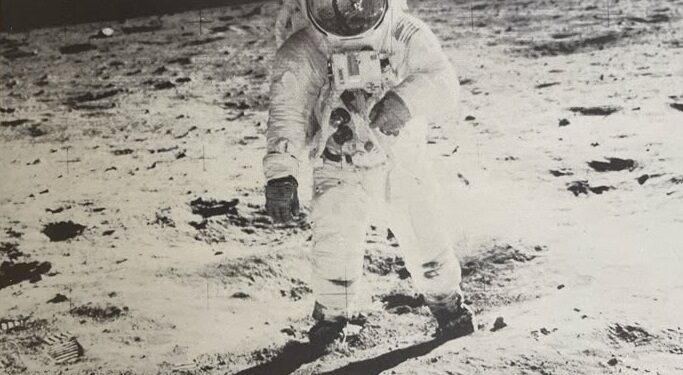The Legacy of Apollo 11: Celebrating Humanity’s First Steps on the Moon
On July 20, 1969, humanity achieved one of its most monumental milestones: landing on the Moon. The Apollo 11 mission, conducted by NASA, marked a significant moment in human history, showcasing innovation, determination, and the spirit of exploration. As we reflect on this historic event, it is essential to understand its significance, the challenges faced, and the legacy it leaves for future generations.
A Race Against Time
The Apollo 11 mission was a product of the intense space race between the United States and the Soviet Union. Following the Soviet Union’s successful launch of Sputnik in 1957 and the first human in space, Yuri Gagarin, in 1961, the U.S. sought to demonstrate its technological prowess and leadership in space exploration.
President John F. Kennedy famously set the ambitious goal of landing a man on the Moon and returning him safely to Earth before the decade’s end. This declaration in 1961 galvanized the nation and led to unprecedented investment in technology, research, and personnel to achieve this goal.
The Apollo Program
NASA’s Apollo program consisted of a series of missions designed to land humans on the Moon and bring them back safely. The program included 17 missions, with Apollo 11 being the most significant. Apollo 11 consisted of three astronauts: Neil Armstrong, Buzz Aldrin, and Michael Collins. Each played a crucial role in the mission’s success.
- Neil Armstrong: As the mission commander, Armstrong became the first human to set foot on the lunar surface.
- Buzz Aldrin: The lunar module pilot, Aldrin followed Armstrong onto the Moon, becoming the second person to walk on its surface.
- Michael Collins: As the command module pilot, Collins remained in lunar orbit aboard the Command Module, Columbia, ensuring that Armstrong and Aldrin could safely return.
The Journey to the Moon
On July 16, 1969, Apollo 11 launched from Kennedy Space Center in Florida atop a Saturn V rocket. The launch was watched by millions around the globe, marking the beginning of a journey that would last four days. The spacecraft traveled approximately 240,000 miles to reach the Moon, navigating through the vastness of space with precision.
Lunar Orbit and Descent
Upon reaching the Moon, Apollo 11 entered lunar orbit on July 19. The mission team conducted a series of checks and preparations before Armstrong and Aldrin transferred to the Lunar Module, named “Eagle.” Collins remained in the Command Module, maintaining communication with both Earth and the astronauts on the lunar surface.
On July 20, the Eagle began its descent to the Moon. As it approached the surface, Armstrong faced unexpected challenges. The original landing site was strewn with boulders, requiring him to take manual control of the spacecraft. With only seconds of fuel remaining, Armstrong skillfully navigated to a safe landing area.
“That’s One Small Step for [a] Man…”
At 2:56 UTC on July 21, 1969, Neil Armstrong stepped onto the lunar surface, uttering the iconic words, “That’s one small step for [a] man, one giant leap for mankind.” His words resonated with millions watching from Earth, encapsulating the moment’s significance.
Armstrong and Aldrin spent approximately two and a half hours outside the Lunar Module, conducting experiments, collecting samples, and capturing photographs. They planted the American flag and left a plaque that read, “Here men from the planet Earth first set foot upon the Moon, July 1969 A.D. We came in peace for all mankind.”
The astronauts collected about 47.5 pounds of lunar rock and soil samples, which would later be analyzed to enhance our understanding of the Moon’s composition and history.
The Return Journey
After successfully completing their lunar activities, Armstrong and Aldrin re-entered the Eagle and prepared for the ascent back to the Command Module. Collins, who had been orbiting the Moon, waited for their return, and the two modules successfully docked.
On July 24, 1969, Apollo 11 splashed down in the Pacific Ocean, where the crew was recovered by the USS Hornet. The mission concluded safely, marking the successful completion of a historic journey that had captivated the world.
The Impact of Apollo 11
The Apollo 11 mission had far-reaching implications beyond just landing on the Moon. It represented a triumph of human ingenuity, scientific progress, and international collaboration. The success of Apollo 11 inspired a generation of scientists, engineers, and dreamers, leading to significant advancements in various fields.
Advancements in Technology
The Apollo program stimulated innovations in technology that have since been applied to numerous industries. From computer technology to telecommunications and materials science, the mission’s challenges led to developments that continue to benefit society today.
For example, the miniaturization of technology required for spacecraft has influenced the design of personal computers, smartphones, and other electronic devices. The rigorous safety protocols established during the Apollo missions also laid the groundwork for modern aviation and aerospace.
A New Perspective on Earth
Apollo 11 also changed how humanity views the Earth. Photographs taken from space, particularly the iconic “Earthrise” image captured during the Apollo 8 mission, revealed the planet’s fragility and beauty. This newfound perspective sparked environmental awareness and a commitment to preserving our planet.
The “Overview Effect,” a cognitive shift in awareness that astronauts experience when viewing Earth from space, has inspired many to advocate for environmental conservation and global cooperation. The realization that we share a single, vulnerable planet has become a vital conversation in addressing climate change and environmental issues.
The Legacy of Apollo 11
The legacy of Apollo 11 is profound and enduring. It set the stage for future space exploration, leading to the development of the Space Shuttle program, the International Space Station, and ongoing missions to Mars and beyond. The collaborative spirit fostered by the Apollo program continues to influence international partnerships in space exploration.
Inspiring Future Generations
The mission has also inspired countless films, books, and educational programs focused on space exploration. The excitement surrounding Apollo 11 ignited interest in STEM (science, technology, engineering, and mathematics) fields, encouraging young people to pursue careers in science and engineering.
Today, initiatives like Artemis aim to return humans to the Moon and establish a sustainable presence, paving the way for future missions to Mars and beyond. The spirit of exploration ignited by Apollo 11 continues to drive humanity’s quest to understand the universe.
Commemorating the Achievement
As we celebrate the 50th anniversary of Apollo 11, various events, exhibits, and educational programs worldwide honor the mission’s legacy. Museums, including the Kennedy Space Center Visitor Complex and the Smithsonian National Air and Space Museum, showcase artifacts, photographs, and interactive exhibits that allow visitors to relive the journey.
Conclusion: A Journey Beyond the Stars
The Apollo 11 mission stands as a testament to human ingenuity, determination, and the spirit of exploration. As we reflect on that historic day in July 1969, we are reminded of the incredible accomplishments that can be achieved when we come together to pursue a common goal. Neil Armstrong, Buzz Aldrin, and Michael Collins not only made history; they inspired generations to dream, explore, and reach for the stars.
As we look to the future, the legacy of Apollo 11 continues to resonate, reminding us that the pursuit of knowledge and exploration knows no bounds. The Moon landing was not just a destination; it was a giant leap for mankind, encouraging us to continue our journey into the cosmos and beyond.














































